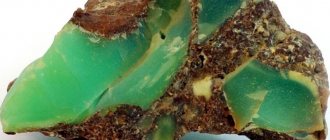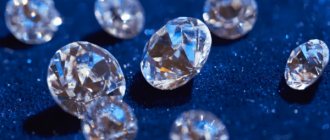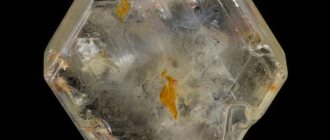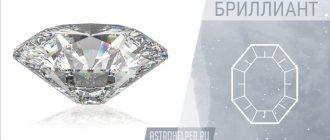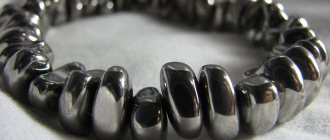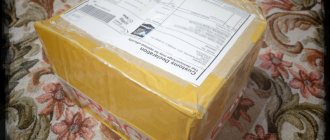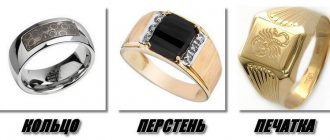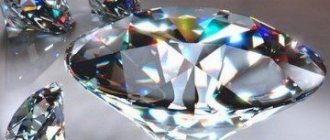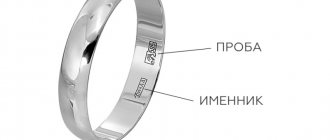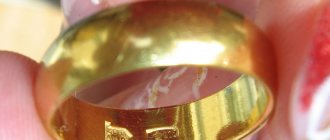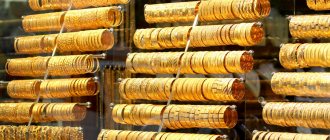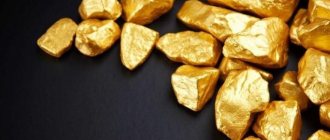A diamond is a true aristocrat among stones, especially if it is distinguished by high clarity and high-quality cutting. Natural diamonds of pure water are very expensive, and if we are talking about stones of rare shades (for example, blue, green or red), then their price is measured in hundreds of thousands, or even millions of dollars.
There are a lot of scammers around diamonds, like other valuables. Royal stones are counterfeited very often, and sometimes you can only determine whether it is a diamond or an imitation in a laboratory. It’s one thing when you consciously buy an analogue of a diamond simply because you can’t afford the original, but it’s another thing when they sell you a fake for a significant amount of money, deceiving you in the most unscrupulous way.
The topic of our conversation today is how to distinguish a diamond from other stones and other analogues.
Story
Moissanite was first synthesized and then found.
The history of the stone began in 1824. Jöns Jakob Berzelius, a Swedish chemist, proved the existence of SiC.
Jons Jacob Berzelius
Berzelius is a theorist. The possibility of the connection's existence was tested by Edward Goodrich Acheson 70 years later.
Edward Goodrich Acheson
He built a power plant at Port Huron and used its energy to heat a high-temperature furnace powered by an electric arc. This was all done to obtain and characterize silicon carbide. The experiment turned out to be successful. The resulting raw material was patented as carborundum.
The author of the experiment had high hopes for SiC and recommended it as an advanced abrasive. Atcherson created a company to produce this material. By the way, it still works.
But the resulting material is not similar to moissanite, although it has the same formula.
We approached the main character of the story - Ferdinand Henri Moissan.
Ferdinand Henri Moissan
Let us remind you that he received the Nobel Prize in Chemistry for obtaining the element fluorine.
But in 1904 he was not a Nobel laureate, but he was active and ambitious. Armed with a newfangled saw, he went to Diablo Canyon, Arizona, to study minerals at the supposed site of the meteorite. He sawed one sample after another. One sample contained traces of SiC.
Moissan rushed to show the find to the scientific community. The authority of the scientist was indisputable, so they did not check the samples for a long time and announced: “natural SiC has been found for the first time.” The mineral was named after the scientist.
After some time, the find was finally checked. It turned out that the particles found were the abrasive that coated the saw tip. But they did not blame the laureate. The fame of the discoverer of natural carborundum was assigned to him.
Carborundum was found ten years later in a meteorite - Moisson was looking in the right place.
Moissanite has a simple compound of carbon and silicon. Both of these elements are found in abundance on Earth, but there is no crystalline compound of them. Formation requires special conditions: high temperature and pressure. This is rare on Earth and around it. But there is a lot of carborundum in deep space in dust clouds around carbon-containing stars. Such space guests fly on meteorites, which is why carborundum is found in craters and kimberlites.
All that we have described are nondescript stones that are far from suitable for inclusion in jewelry.
The first mentions of gem-quality stones date back to the 40s - 60s of the 20th century. Scientists write enthusiastically about the optical properties of the resulting crystals. The records mention either blue, or green, or colorless stones. Everyone noted the enormous potential of this material in the jewelry industry.
However, for a long time there was no technological opportunity to set up the production of moissanite and release it to the market. Crystal growth was too unstable. All that was achieved was luck, not a conscious result. The color was not beautiful, but the world loves either transparent stones, or bright and colorful ones, and not dirty green ones.
The opportunity to produce moissanite for making jewelry appeared in the 90s of the 20th century. We will talk about entering the markets later.
Moissanite, carborundum, silicon carbide
This one compound is SiC. But not synonyms. The world community has agreed to separate them so as not to get confused.
Carborundum is the commercial name of a material that is used for technical needs. These are small crystals measuring 2-5 mm in length and no more than 1 millimeter thick. The color is yellow or green, but so dark that it seems more black. It is not customary to call carborundum moissanite.
Crystals that are found in nature also look synthetic - dark green to black with a strong shine. But a mineral found in nature has a natural origin. It is named after Moissan.
Silicon carbide is a compound. This name combines the two previous concepts.
Moissanite and diamond
Another scandalous story is connected with the entry into the jewelry market. It appeared to the world not as an independent stone, but as an imitation of a diamond.
What is a diamond? This is a cut diamond, natural carbon. They love it for its hardness and shine. The diamond is undeniably beautiful and desirable, but expensive. Not everyone who suffers can buy it.
Diamonds were counterfeited back in Ancient Rome with zircons or glass. The fake was easily detected.
In the twentieth century, counterfeits became technologically advanced, but still recognizable.
It was 1970. Cubic zirconium dioxide was synthesized in the Soviet Union. In our country it is known as fiant, after the name of the institute that made the discovery. In the rest of the world it is called a zirconium cube. They don’t want to recognize the name - they were offended, because the stones from the USSR deceived the whole world - they were so similar to diamonds. But they found a way to distinguish them - by thermal conductivity. In diamond it is higher. Portable measuring instruments were created and the jewelry world exhaled. Later we noticed another drawback of cubic zirconia. It is softer, so worn cubic zirconia does not shine very much due to worn edges.
In the 90s, a new shock occurred - jewelry with diamonds, which turned out to be another mineral, unknown, floated into pawn shops and purchases. It passed the thermal conductivity test, had a great shine and did not scratch.
It turned out that it was moissanite, known for 100 years. But ennobled and improved. Finally, the chemical industry has learned to remove the green from it and make it completely transparent. Until 2015, the patent for the production of stones belonged to an American company. Diamond analogues were expensive and were almost equal in price. There are several reasons - expensive production and monopoly.
As soon as the patent expired, moissanite production began to open all over the world, prices fell, but it did not become affordable.
Physicochemical characteristics
All the main characteristics have already been listed, all that remains is to summarize.
Moissanite is a rare natural mineral composed of silicon and carbon. Outwardly, it resembles anthracite coal, but it shines.
Artificial jewelry carborundum is also called moissanite. It does not belong to minerals.
The properties are described in the table:
| Color | From colorless to black |
| Chemical formula | SiC |
| Shine | Semi-metallic |
| Mohs hardness scale | 9,5 |
| Transparency | Transparent, opaque, translucent, translucent |
| Density | 3,17 |
| Refractive index (for a jewelry sample) | 2,65 |
As you can see, the degree of refraction is higher than that of a diamond, which means moissanite shines more.
Benefits of moissanite:
- withstands temperatures up to 1700 degrees Celsius;
- does not react with other substances;
- has high thermal conductivity;
- has a low coefficient of thermal expansion and suffers from phase transitions.
Varieties
Moissanite is divided into varieties depending on color.
Solid moissanite ring
The natural mineral comes in two colors: dark green and black. The structure of the crystals is opaque, sizes vary from 0.5 to 4 mm.
The most common varieties of synthesized moissanite are:
- colorless, completely transparent specimens, which after cutting are considered an imitation diamond;
- jewelry crystals colored in yellow, green, blue, brown and black shades;
- specimens of dark colors intended for technical purposes.
Artificial moissanite, depending on the form of release, is:
- powdery;
- in the form of abrasive crumbs;
- crystals for jewelry, size 4-12 mm.
Price
The price is set at approximately 5-10% of the cost of a diamond of identical quality. But don't delude yourself. Moissanite imitates expensive pure diamonds, so the average price is $250 - $600 US. A ring with moissanite costs approximately 40,000 rubles.
For comparison: a cubic zirconia insert costs 40 - 50 rubles. The cost of the product mainly depends on the weight and quality of the frame.
For this reason, it did not become a mass stone. Few people will want to buy a product with synthetic inserts for a lot of money. Even though this stone is very beautiful and shiny, it is an imitation.
How to wear?
Faceted moissanite
Visually, moissanite differs from a diamond only in its brighter shine. When choosing it as a decoration, you should take into account the color and size of the stone, the event and time of day:
- A pendant with a miniature stone and stud earrings with moissanite will accentuate a business suit.
- Long earrings, bracelets, rings and necklaces with colorless and completely transparent crystals are an integral part of the evening wardrobe. Jewelry with moissanite is worn at evening receptions and status events.
- Black stones are inserted into men's accessories and jewelry - cufflinks, rings, tie clips, pendants.
Everyday look will be complemented by products with small stones. Jewelry with large crystals and sets are best left for the evening.
It is not recommended to combine moissanite in jewelry with lower class minerals, especially with semi-precious and decorative stones. The exception is cubic zirconia, which jewelers often use to inlay items.
Magical and healing properties
It is customary to look for magical properties in stones so that they become decorations and talisman. Some pass through the centuries and become family heirlooms.
This will not happen with moissanite. It was born in a laboratory in a few hours, which means it is empty. He did not lie in the ground, did not absorb its power, was not filled with the energy of the cosmos.
Natural stones have been formed over thousands of years. It is a product of rapid changes in the earth's crust. Stones are witnesses to the history of the Earth from its very inception. Their appearance is a miracle and a whim of nature. Synthetic ones appear thanks to human intelligence and perseverance. If we look at it from this point of view, we can say that moissanite is a symbol of intelligence and work. An explanation will reassure, but will bring nothing.
A talisman made from moissanite will not work.
The emptiness must be filled. Same with stone. The person who wears it can give it energy themselves. Good or evil will depend on the person.
If you wear moissanite and think about good deeds, enjoy life, then it will become a good amulet, and you will gradually begin to share this with others. Decades later, this stone can be made into a relic.
If the stone witnesses sad, evil or wicked thoughts, then good will not be expected from it.
Natural moissanite has a whole range of characteristics. If you can find it, the stone can be used to solve difficult life situations. It helps to find answers to insoluble questions and get out of difficult situations. It is important that the talisman helps you make the right choice.
With him, the character becomes light, carefree, and easy to communicate with.
Most moissanites came from outer space, so they can reveal extrasensory abilities in the owner and develop intuition. Under its influence, a person becomes wise and perspicacious. An understanding of the meaning of life comes.
Application
Naturally occurring moissanite crystals are rare and are too small to process. Because of this, they are not used in jewelry. But specimens fused with pieces of meteorites and other earthly rocks are in demand among collectors.
Moissanite ring
Synthetic moissanite is used in a variety of fields:
- in jewelry - the stone is inserted into all types of jewelry, products with moissanite are framed in silver, platinum and gold;
- in the manufacture of abrasives, semiconductors, brake discs, diodes, transistors, relays;
- in optics;
- as an additive to foam concrete;
- in the manufacture of heating elements;
- as a catalyst during the oxidation of hydrocarbons.
Moissanite composite armor is used to cover body armor and nuclear reactors.
